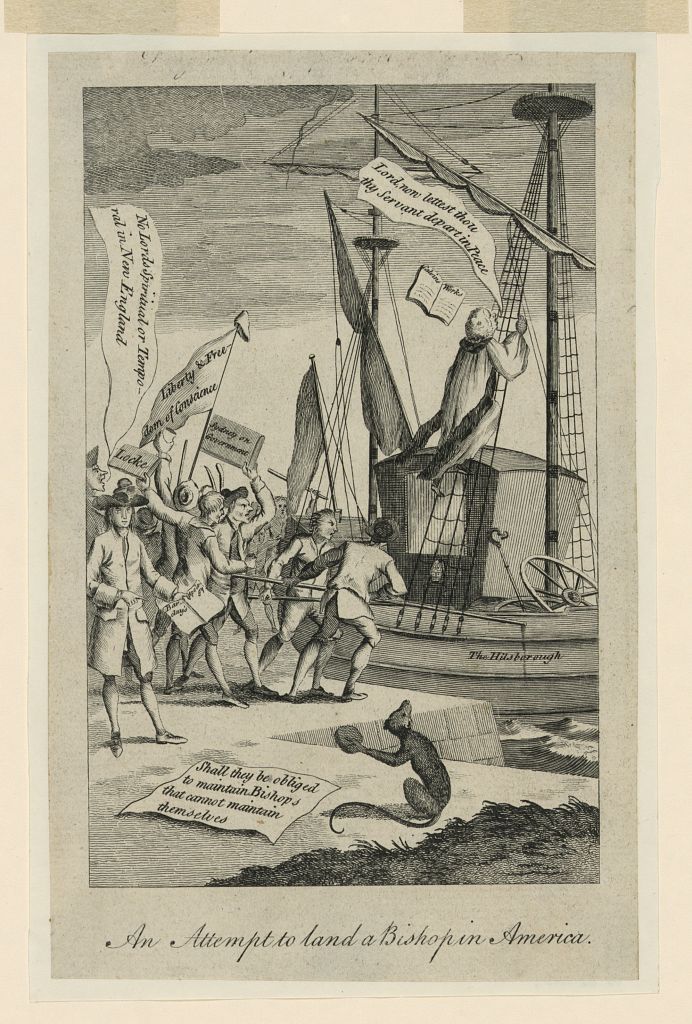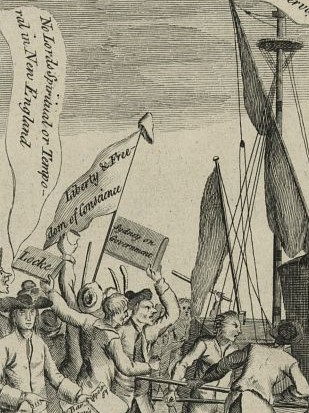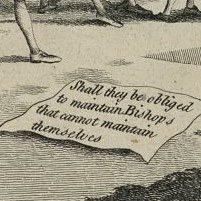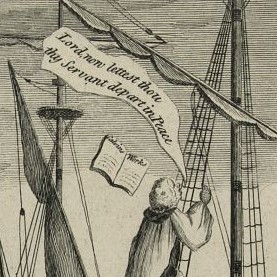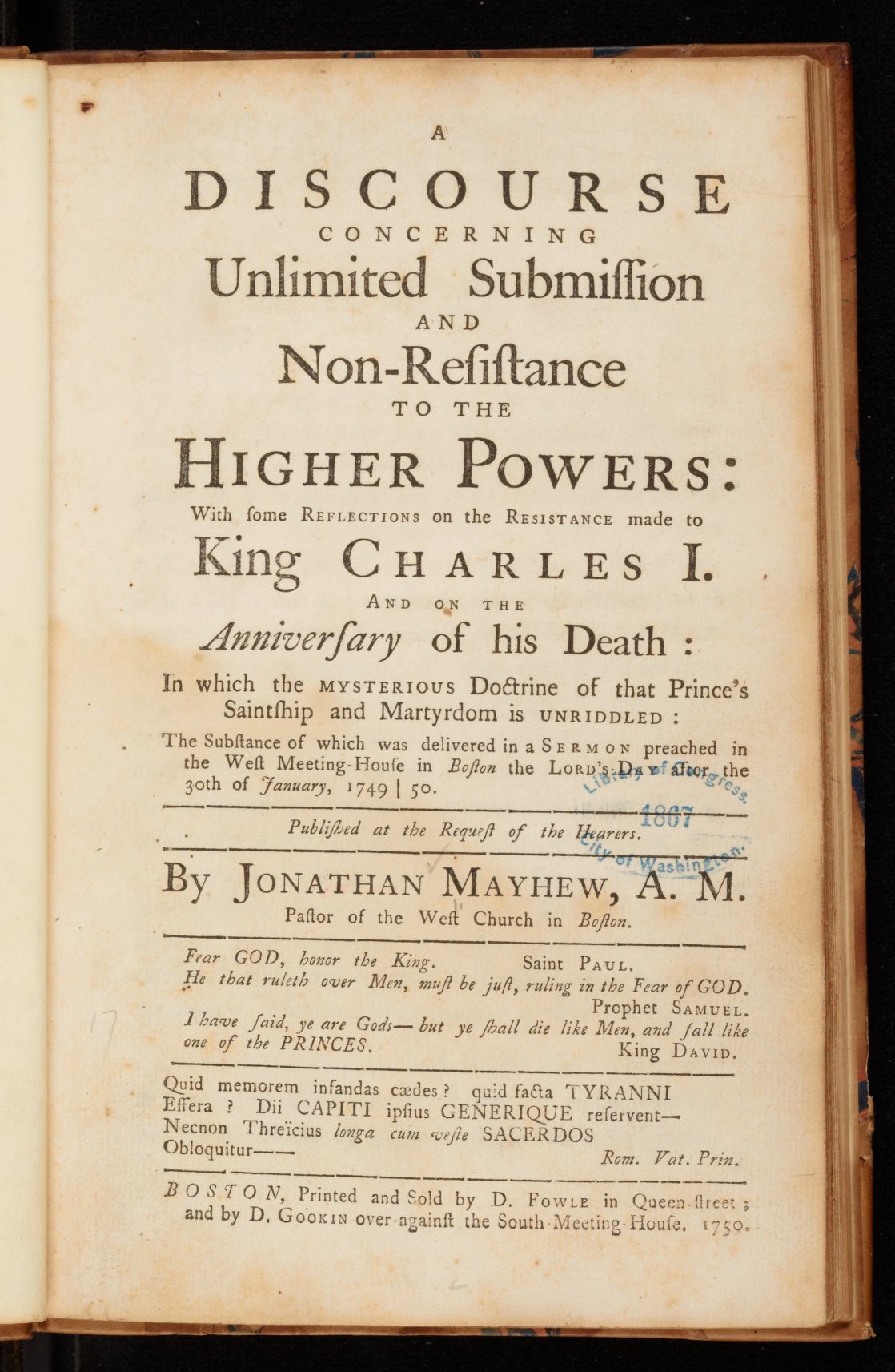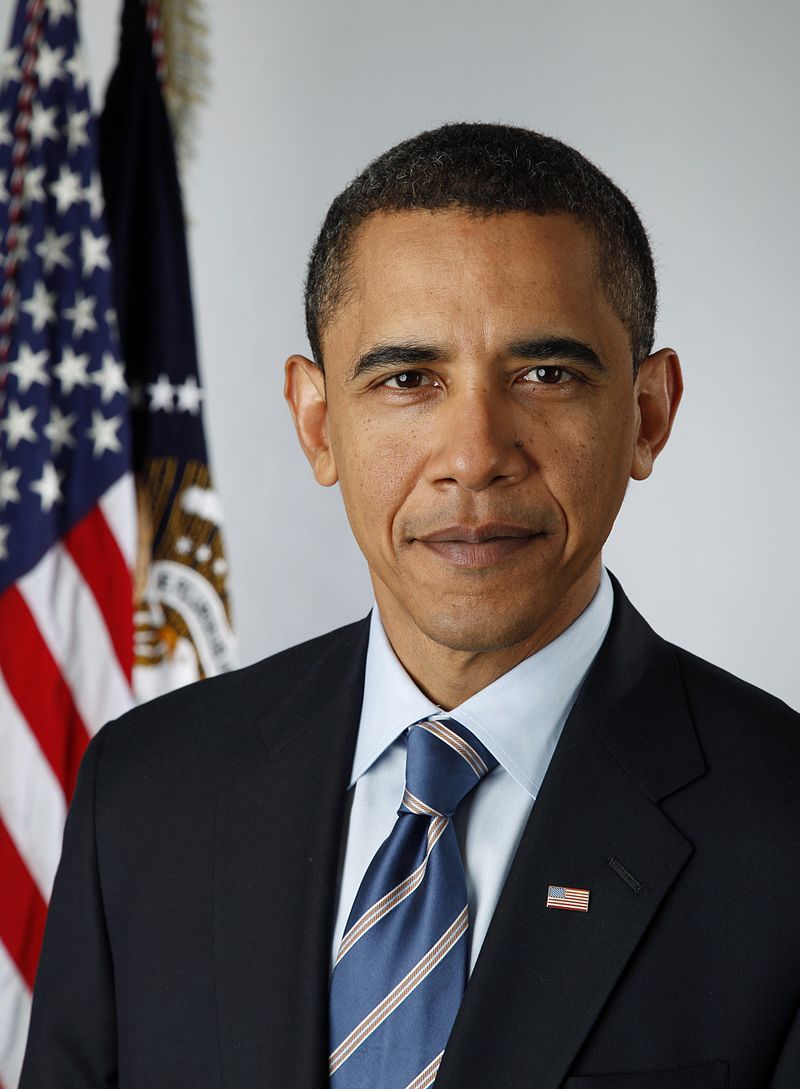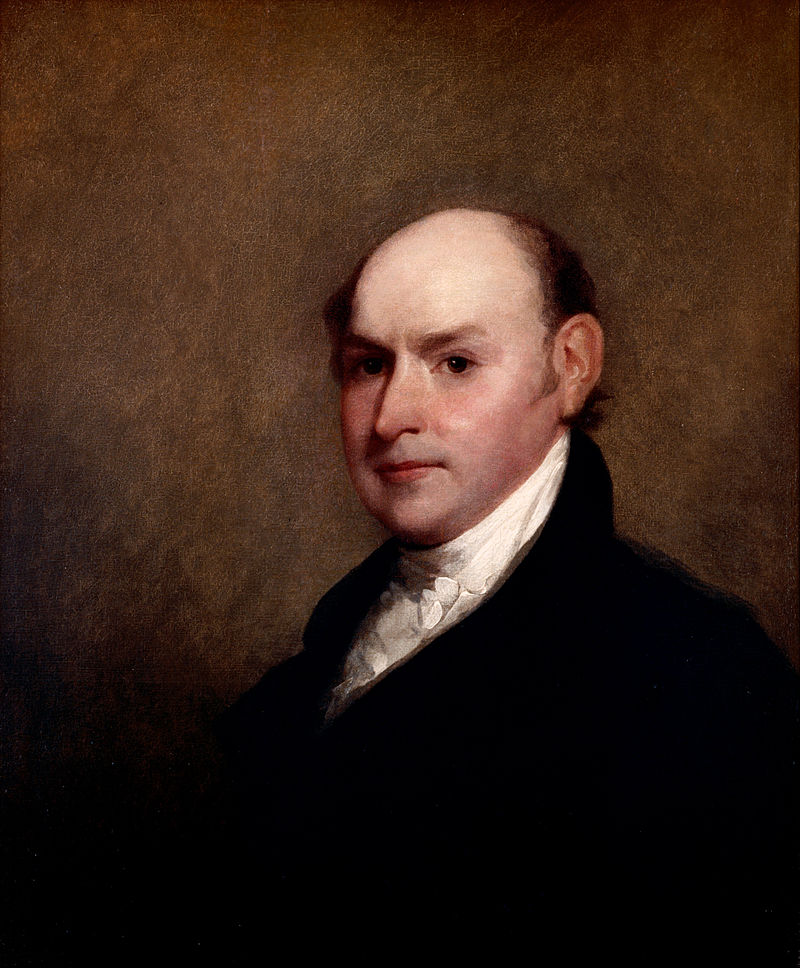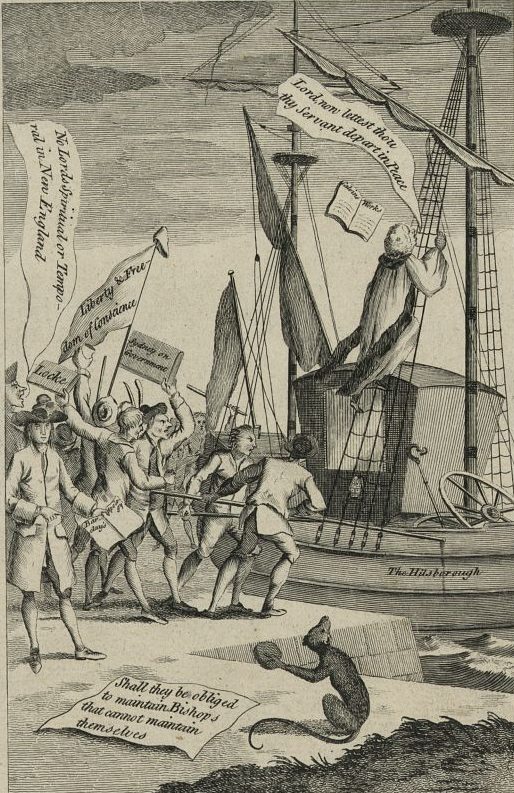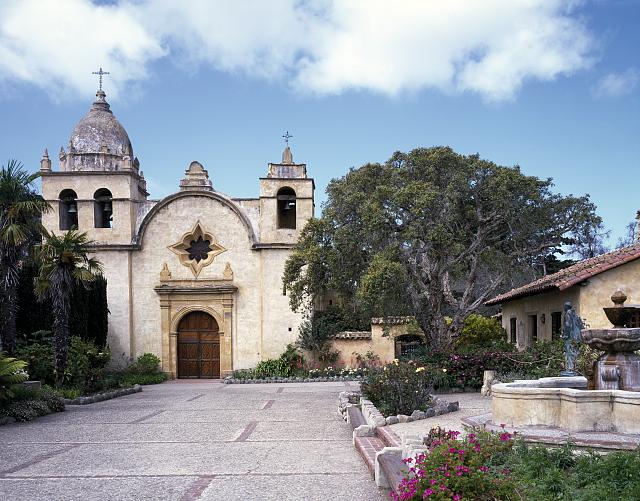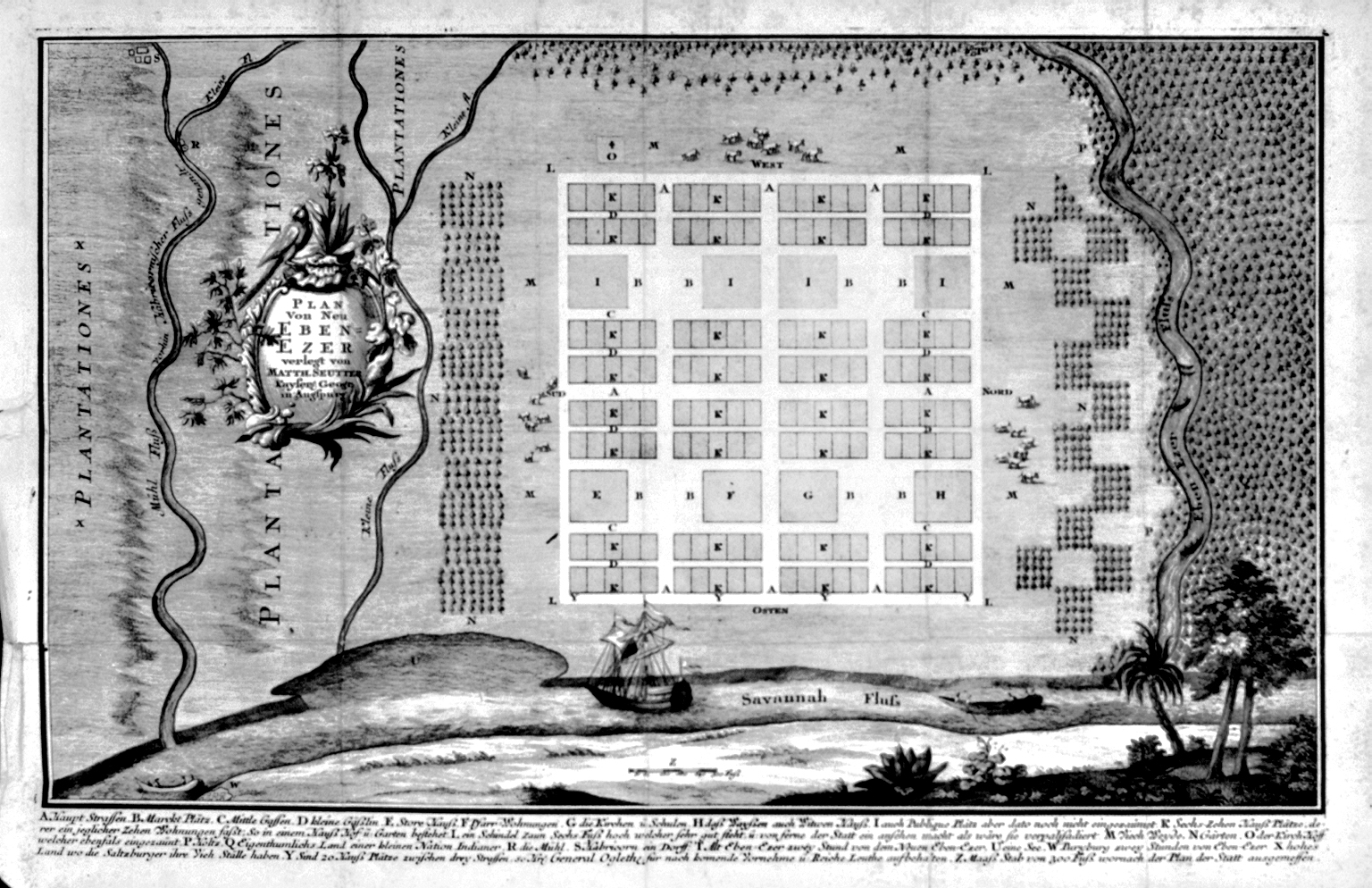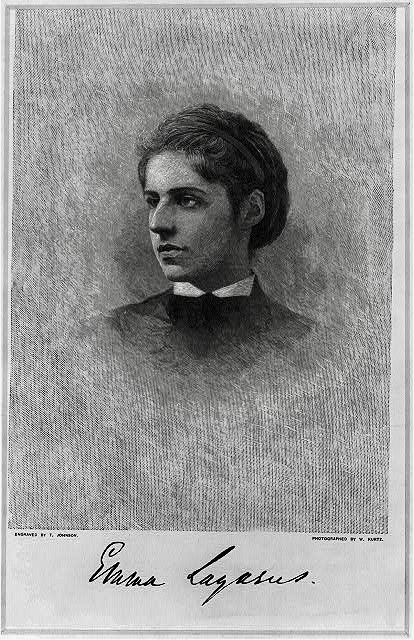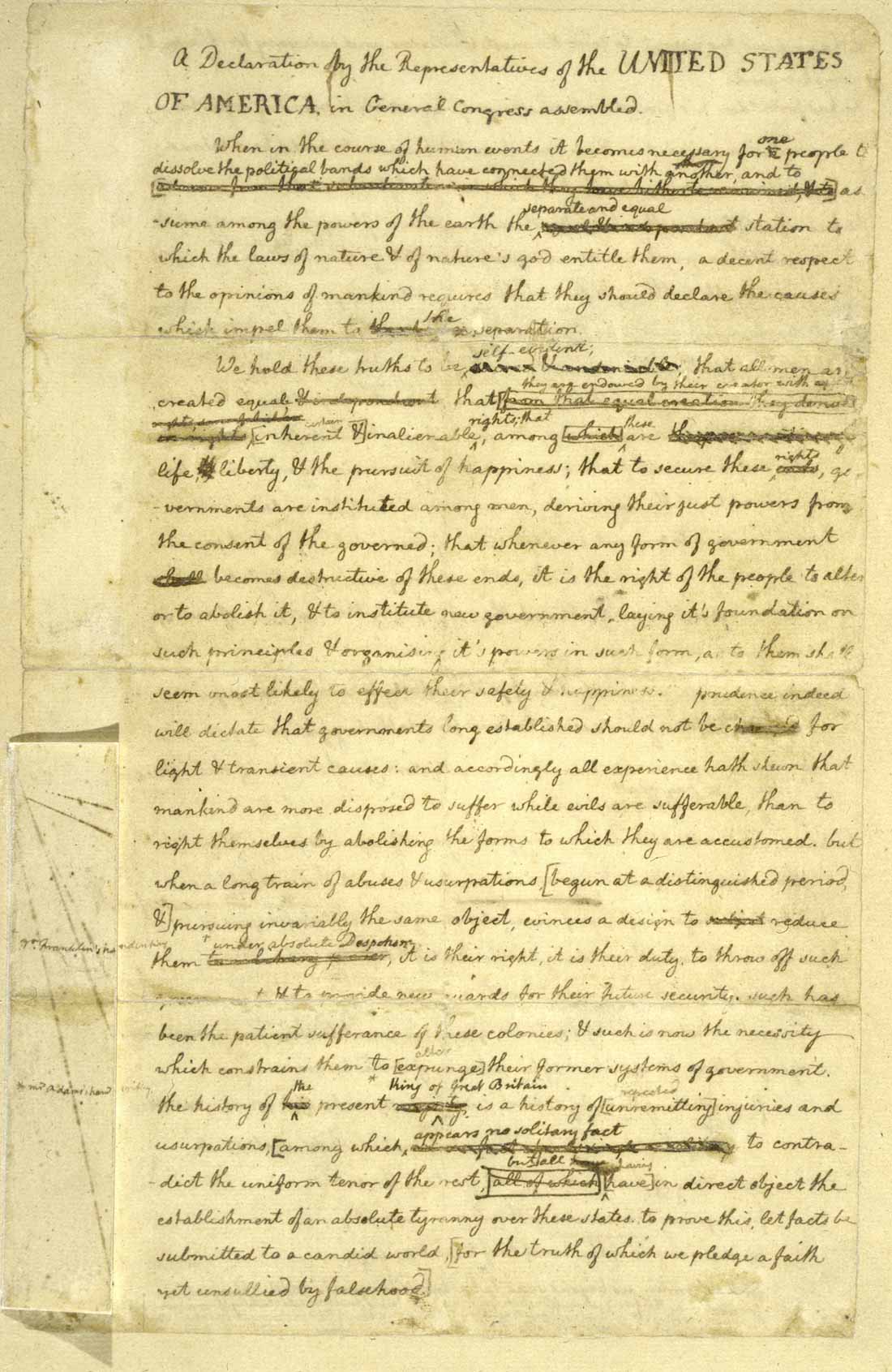An Attempt to Land a Bishop in America
unknown
1768
Detail
The crowd of angry men standing on the shoreline chasing the bishop away hold a variety of placards, banners, and books. Prominent among these are “Barclay’s Works” (most probably a misspelling of George Berkeley), “Sydney on Government,” and “Locke.” All three philosophers had urged “Liberty and Freedom of Conscience” in their works in various ways.
Detail
In the foreground of the image, we see a bit of paper with the question “Shall they be obliged to maintain Bishops that cannot maintain themselves?” written on it, evidence that the colonists’ objections were not purely philosophical but had a practical dimension. To support the Anglican establishment–in addition to their own ministers–would have been a significant financial burden upon dissenters. Moreover, they argued that if the established clergy were any good at their jobs, they would be able to survive on the voluntary tithes collected from their own parishioners. This sorts of arguments ultimately helped speed the way for the disestablishment of all state-supported churches in the new nation.
Detail
In this quadrant of the image, we see the erstwhile Bishop attempting to climb back on board the vessel that presumably brought him to New England, proclaiming “Lord, now lettest thou thy servant depart in peace.” Ironically, it is clear that his departure is anything but peaceful, as the volume of “Calvin’s Works” sailing towards his head indicates the wrath of the assembled colonists below. The artist’s choice of Calvin’s Works here as the first missile to hit the target is telling: it indicates the degree to which the contemporary audience understood the role of Reformed resistance theorizing in supporting the Independence movement.
